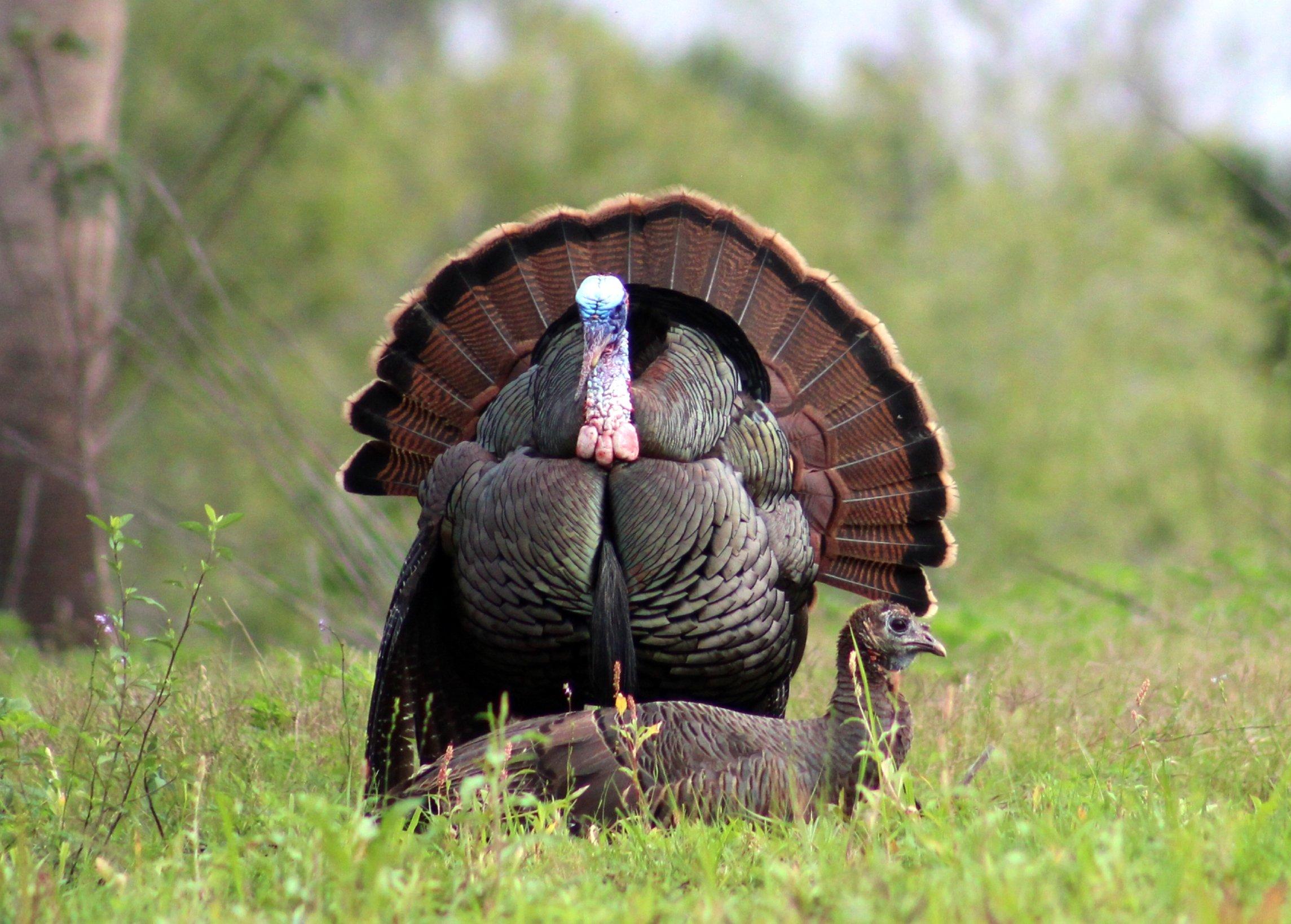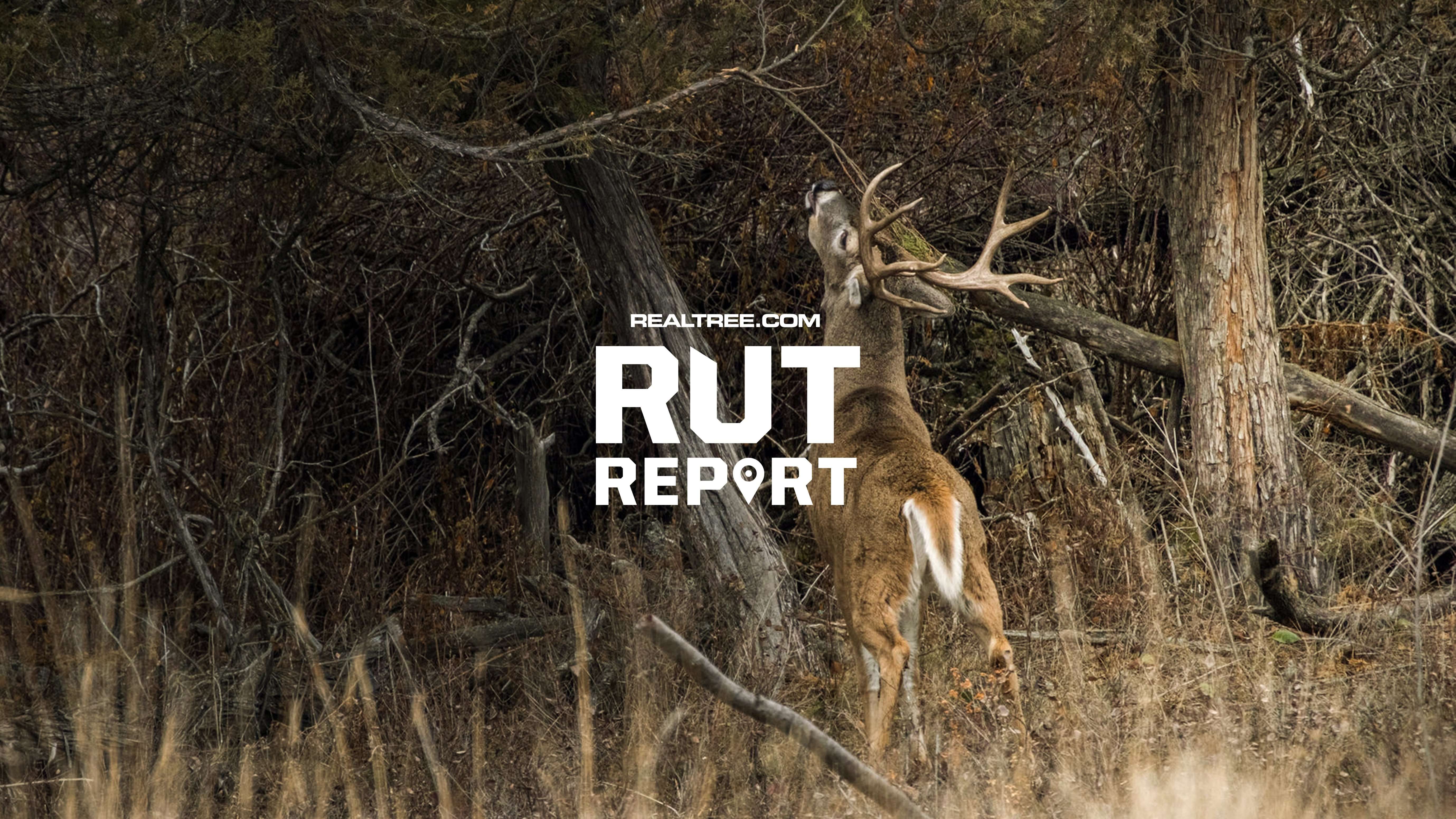This spring might provide a mixed bag in the South, with quality hunting in some states but more difficult prospects in others

Production has been good in some Southern states but poor or flat in others, resulting in mixed prospects across the region for Spring 2025. Photo by Marc Pletcher.
The South remains the heart and soul of modern turkey hunting, but it has seen ups and downs — OK, maybe quite a few downs — the past several years. Bird numbers continue to struggle in some states, but other areas have provided cause for optimism.
One thing is for sure: Southern turkey hunters won’t be deterred, and they’ll be out in force this spring, chasing the toughest birds in the country. If you’re part of that dedicated legion, here’s what you can expect this season.
ALABAMA
Brandon Earls, upland game-bird coordinator for the Alabama Department of Conservation and Natural Resources, said the 2023 statewide poult-per-hen ratio was low (1.26 poults per hen), which suggests that hunters might see fewer 2-year-old gobblers in Spring 2025. However, the 2024 survey indicated 2.0 poults per hen, indicating there might be more jakes on the landscape and perhaps more 2-year-old gobblers in 2026.
“Based on the annual brood survey from 2023, observations were highest throughout the Interior Plateau and lowest in the Piedmont region, suggesting that hunters could observe more 2-year-old gobblers in the Interior Plateau compared to the other ecoregions,” he said.
Alabama’s post-season harvest survey estimated that state hunters took about 35,906 turkeys during Spring 2024.
Read More: Turkey Hunting in Alabama
Don’t Miss: Sweet New Turkey Gear for 2025
ARKANSAS
“The current outlook for wild turkeys in Arkansas is favorable,” said David Moscicki, wild turkey program coordinator for the Arkansas Game and Fish Commission. “There have been several years of good reproduction across the state, which should equate to excellent hunting opportunities this year.”
Moscicki said all of Arkansas’ ecoregions have seen good reproduction the past few years, which has led to an increase in harvest rates. That suggests that populations are responding well to regulations and management efforts. The Arkansas Delta region has had historically low harvest numbers, but several areas still offer good opportunities to harvest a turkey.
In 2024, about 224,000 licensed hunters took 9,296 turkeys in Arkansas.
Read More: Turkey Hunting in Arkansas
FLORIDA
“We expect an average spring turkey season harvest in 2025,” said Juliana Ofalt, wild turkey and furbearer management program coordinator for the Florida Fish and Wildlife Conservation Commission’s Division of Hunting and Game Management. “Florida's outlook is good this year. Our statewide brood survey indicated sustainable hatches in 2022 and 2023, indicating we should have another successful spring of turkey hunting.”
Ofalt said the state can’t single out specific regions that might produce better hunting. The top 10 wildlife management areas with the highest number of birds harvested during 2024 included Three Lakes, Apalachicola, and Richloam. The top 10 WMAs with the least number of hunter days per turkey harvested — an indicator of high-quality hunting — during 2024 included Guana River, Dinner Island, and Babcock Ranch Preserve.
Overall, about 31,085 hunters took about 14,513 turkeys in 2024.
Read More: Turkey Hunting in Florida
GEORGIA
Emily Rushton, senior wildlife biologist and wild turkey project leader for the Georgia Department of Natural Resources, said Georgia’s Spring 2025 turkey hunting outlook is about average. In 2023, statewide poult production was close to the 10-year average of about 1.5 poults per hen.
“This will likely translate to adult turkey harvest levels that have been similar to the past few years,” she said. “On a positive note, the poult production observed in 2024 was higher than average statewide, so hunters will likely be pleased with the number of juveniles they see this season.”
The upper and lower Coastal Plain regions had high poult production in 2023, so the southern part of the state should see higher-than-normal adult turkey harvest. The northern portion of the state experienced lower-than-average poult production in 2023, so hunters might see fewer adult birds in those areas.
In 2024, 38,810 Georgia hunters took about 11,924 turkeys.
Read More: Turkey Hunting in Georgia
KENTUCKY
“This past spring (2024), we harvested our third-highest-ever number of turkeys statewide,” said Zak Danks, turkey program coordinator with the Kentucky Department of Fish and Wildlife Resources. “The majority of [those] gobblers hatched in 2022, so considering the 2023 hatch was on par with 2022’s, I expect some pretty good hunting in Spring 2025.”
During research banding this past winter, biologists caught an unusually high percentage of jakes, Danks said. That backs up survey data and bodes well for youth and new hunters just looking to bag a bird this spring. For hunters who like to lay off jakes, it bodes well for 2026.
“Hatches in 2022 and 2023 were best in the western third of the state,” Danks said. “Central Kentucky wasn’t too far behind, but eastern Kentucky was down quite a bit, which could make it a bit tougher for mountain hunters. The good news there is that because of the steeper terrain and harder-to-access hunting, there are still birds for the intrepid hunter, particularly around reclaimed coal ground, which provides herbaceous cover for food and strutting in amongst the otherwise mostly closed canopy forest.”
During Spring 2024, an estimated 86,000 to 94,000 active Kentucky turkey hunters took 33,460 birds.
Read More: Turkey Hunting in Kentucky
LOUISIANA
Cody Cedotal, resident small-game/wild turkey program manager for the Louisiana Department of Wildlife and Fisheries, said his state’s outlook is is moderate to good overall because of increased reproduction in recent years.
“We have seen good reproduction in the past two years in southeastern, northwestern, and western regions of the state, which should translate to increased sightings and encounters for turkey hunters in those areas,” he said. “Turkey populations in management regions along the Mississippi River continue to struggle a bit, but dry conditions during the nesting and brood rearing periods in recent years seem to be helping reproduction in these areas also.”
In Spring 2024, about 22,300 hunters took about 6,000 turkeys.
Read More: Turkey Hunting in Louisiana
Don’t Miss: How to Avoid the 4 Biggest Turkey Calling Mistakes
MISSISSIPPI
“The outlook for Spring 2025 should be solid,” said Adam Butler, wild turkey program coordinator with the Mississippi Department of Wildlife, Fisheries and Parks. “Mississippi is coming off two of the best spring turkey seasons since the early 2000s, and while 2025 may not quite match those, it won’t disappoint. As a state, we seem to be sitting in a much better place turkey-wise right now than we were for most of the 2010s. Most regions of the state have posted good hatches in at least two if not three of the past four years, so there are a lot more turkeys on the landscape.”
Butler said almost every area of the state is about equal right now population-wise because of good hatches throughout.
During Spring 2024, 67,439 licensed turkey hunters took about 36,337 birds.
Read More: Turkey Hunting in Mississippi
NORTH CAROLINA
Hannah Plumpton, upland game-bird biologist with the North Carolina Wildlife Resources Commission, said results from the state’s 2024 summer observation survey were similar to those of the 10-year average. Combined with high harvest numbers, that suggests that North Carolina’s turkey population remains stable.
“For several years, our surveys and harvest monitoring continue to suggest that the most robust turkey populations are in eastern North Carolina,” she said. “That’s not to say that good hunting doesn’t exist in the piedmont and mountain regions, but in general, those regions have not been as productive in recent years.”
In 2024, North Carolina hunters took 24,074 turkeys.
Read More: Turkey Hunting in North Carolina
SOUTH CAROLINA
Charles Ruth, big-game program coordinator for the South Carolina Department of Natural Resources, said his state’s overall outlook is only fair, based on continuing poor reproduction, which has led to lower turkey numbers and harvest figures the past 10 years.
Ruth said most areas of South Carolina might be down somewhat from previous years.
During Spring 2024, about 50,000 active hunters took 12,428 turkeys.
Read More: Turkey Hunting in South Carolina
TENNESSEE
“I suspect our harvest numbers overall will be a little below average this year because we didn’t have a real good hatch back in 2023 overall,” said Roger Shields, wild turkey program coordinator with the Tennessee Wildlife Resources Agency.
Shields said the western portion of the state, which had seen pretty big declines for several years, appears to have rebounded and has experienced good reproduction the past few years.
“I suspect the western and central areas (which always have good numbers) will lead harvest this coming spring. The eastern portion of the state, which had seemed impervious to the declines affecting the southeastern United States, now appears to be encountering some declining trends. Reproduction in the east has been poor the past few years, and I suspect harvest will be below average in this part of the state.”
In Spring 2024, Tennessee had a reported turkey harvest of 31,647.
Read More: Turkey Hunting in Tennessee
Check Out Our Latest Camo Pattern: Realtree APX
VIRGINIA
“We anticipate another good year in 2025,” said Mike Dye, forest game-bird biologist with the Virginia Department of Wildlife Resources. “While we do anticipate harvest levels to drop back down slightly from the record and near record harvests of the past two seasons, the data continues to indicate we have robust populations across wide portions of Virginia.”
Dye said 2023 brood data was a bit underwhelming, at about 1.8 poults per hen, which suggests that there might not be as many 2-year-old gobblers on the landscape. Although the overall population appears to be strong, biologists have noted some declines in a few areas, including far southwestern Virginia, and in the southern and central piedmont.
“We have noted some impressive improvement in the northern piedmont and the Shenandoah Valley over the past several years, with an especially good hatch in 2024,” Dye said. “Generally speaking, though, eastern Virginia and the tidewater region continues to be the bright spot for turkeys in Virginia.”
During 2024, about 63,000 Virginia turkey hunters took 21,988 turkeys.
Read More: Turkey Hunting in Virginia
















































